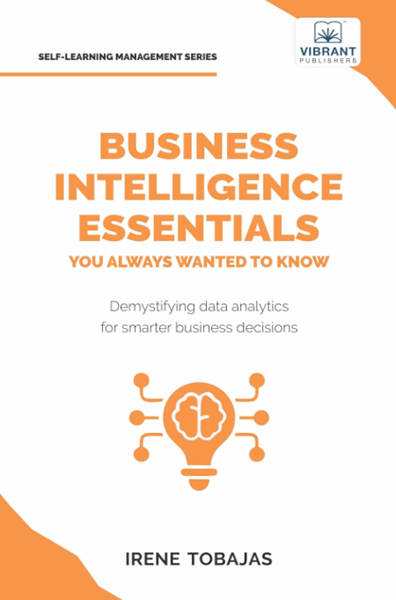Book Review: Business Intelligence Essentials You Always Wanted To Know

I recently had the opportunity to read a preview of Business Intelligence Essentials You Always Wanted To Know by Irene Tobajas from LUKiN Consulting.
I like the way each chapter started with a set of key learning objectives.
I also like the way that quiz questions are integrated into the text (even though there’s the odd question where I didn’t love the answer. For example, saying that Data Mining wasn’t a component of BI).
I think having the chapter summaries is also useful.
General Thoughts
Not sure I’d agree that Hadoop is particularly popular any more. That might be the areas that I work in, but it seems to have largely fizzled out as a key aspect of modern systems.
The section covering On-premises vs cloud tradeoff seems to ignore deployment (and CI/CD). Also, I can’t agree that security is just managed by the service provider when working in cloud-based environments.
The Power BI free tier isn’t mentioned, yet for many people, it’s all that’s needed, at least when they’re starting out.
When comparing tools like Power BI, Tableau, Qlik, etc., there isn’t a discussion on how the semantic models differ. There are huge differences here, and they matter.
I wouldn’t mention Sisense nowadays. I’m not impressed by it at all, and we have spent our days migrating clients from it.
Analytics
I do like the way Irene approaches projects by starting with the desired KPIs. What we find endlessly useful is mocking up some data with Excel or even Power BI Desktop to show users what we’re talking about. They often have no idea what they really want until they start to see it. Excel is particularly good at this.
For example, it’s pointless to write down the word sales, as the customer said it, if they really meant profit. As soon as they start to see the data, they will correct it. I had to laugh when a short while back, a friend of mine Dave Dustin, was having a bad day, and said he was just going to spend the day giving people exactly what they asked for. (The point being that it’s never what they actually want).
I liked the comparisons of descriptive vs diagnostic analytics, but I think I would have been starting to compare predictive analytics at that point. Some of the diagnostic analytics is already leaning into predictive analytics.
I liked the way the book leaned into Prescriptive analytics as well. This is an area that so many books ignore. As for the four types of analytics, I was a bit surprised that each didn’t get a separate chapter.
Visualization
In the visualization section, I was puzzled that decomposition trees didn’t feature. Our clients find them one of the most useful types of visualization.
While color blindness is mentioned, I would have preferred to see some content on how to test systems for a variety of color-related issues. There are many tools available nowadays.
I liked the content on common mistakes in visualization, but I also expected to see more content on topics like accessibility.
Project Management
It was good to see content on rollout phases for projects. What I would like to have seen is content on how to choose the right projects in the first place, and how to choose the right parts of the right projects to start with. You need to ensure that the people you need to impress to get continued buy-in, are impressed immediately. There is a discussion on getting early wins, but the choice of what to work on, is a key ingredient in getting those early wins.
I would have liked to have seen security-related issues discussed really early on. Far too many projects attempt to sprinkle security on later.
It was good to see content on data governance and data quality here.
In the AI content, it’s mentioned that “by 2025, …”. Given it’s already 2025, and this was a preview book, hopefully that’ll be updated before it’s released.
Summary
I found Irene’s book interesting.
6 out of 10
2025-04-17
